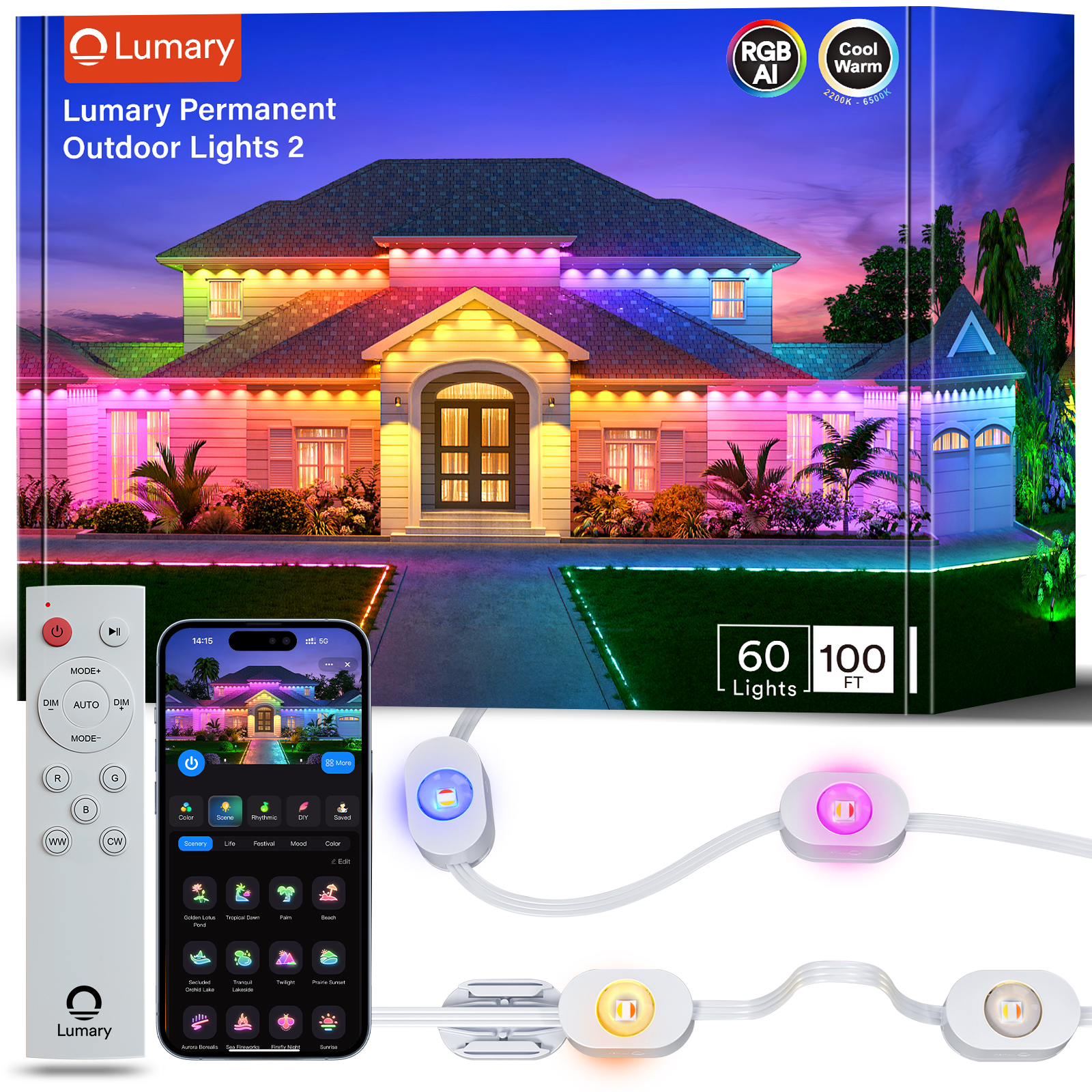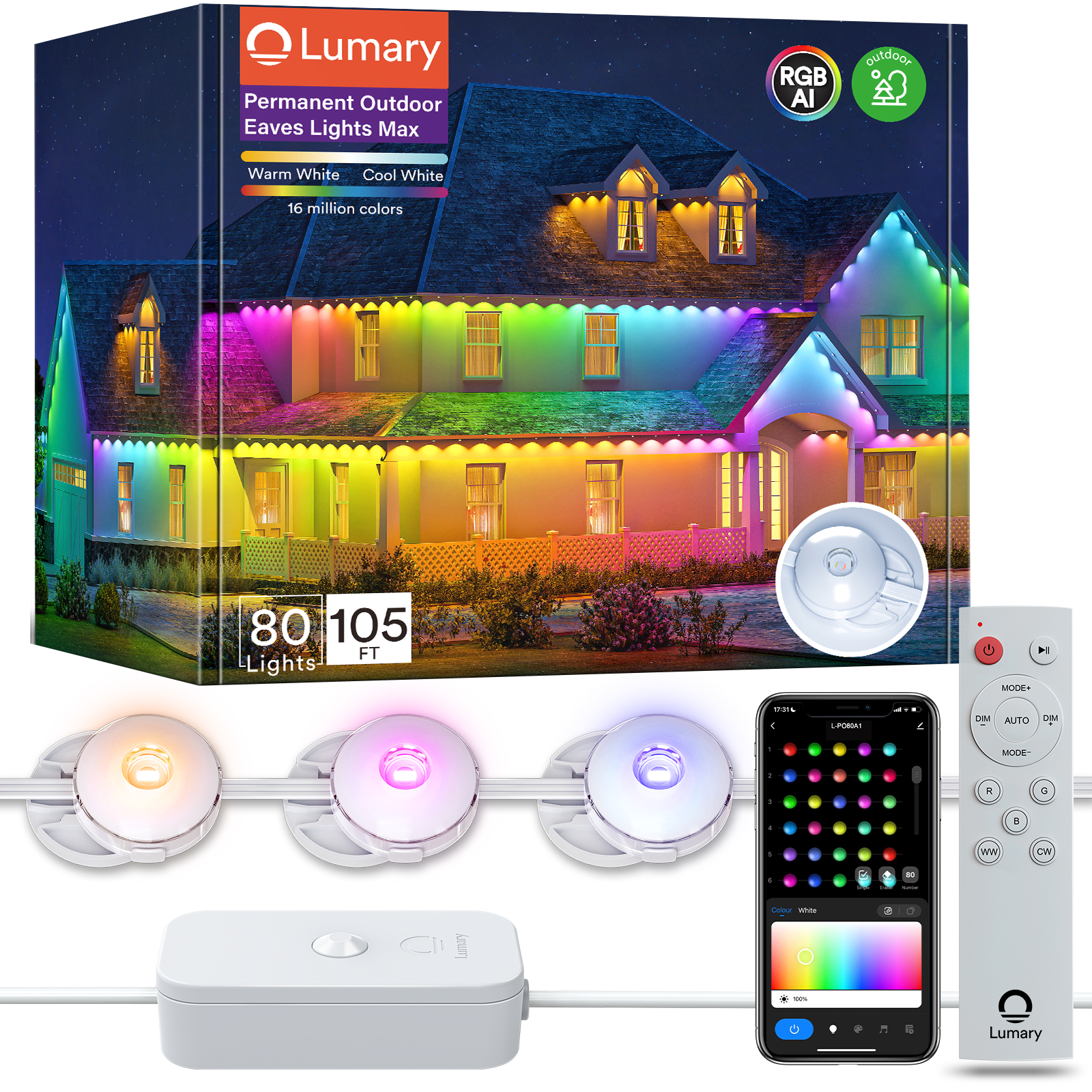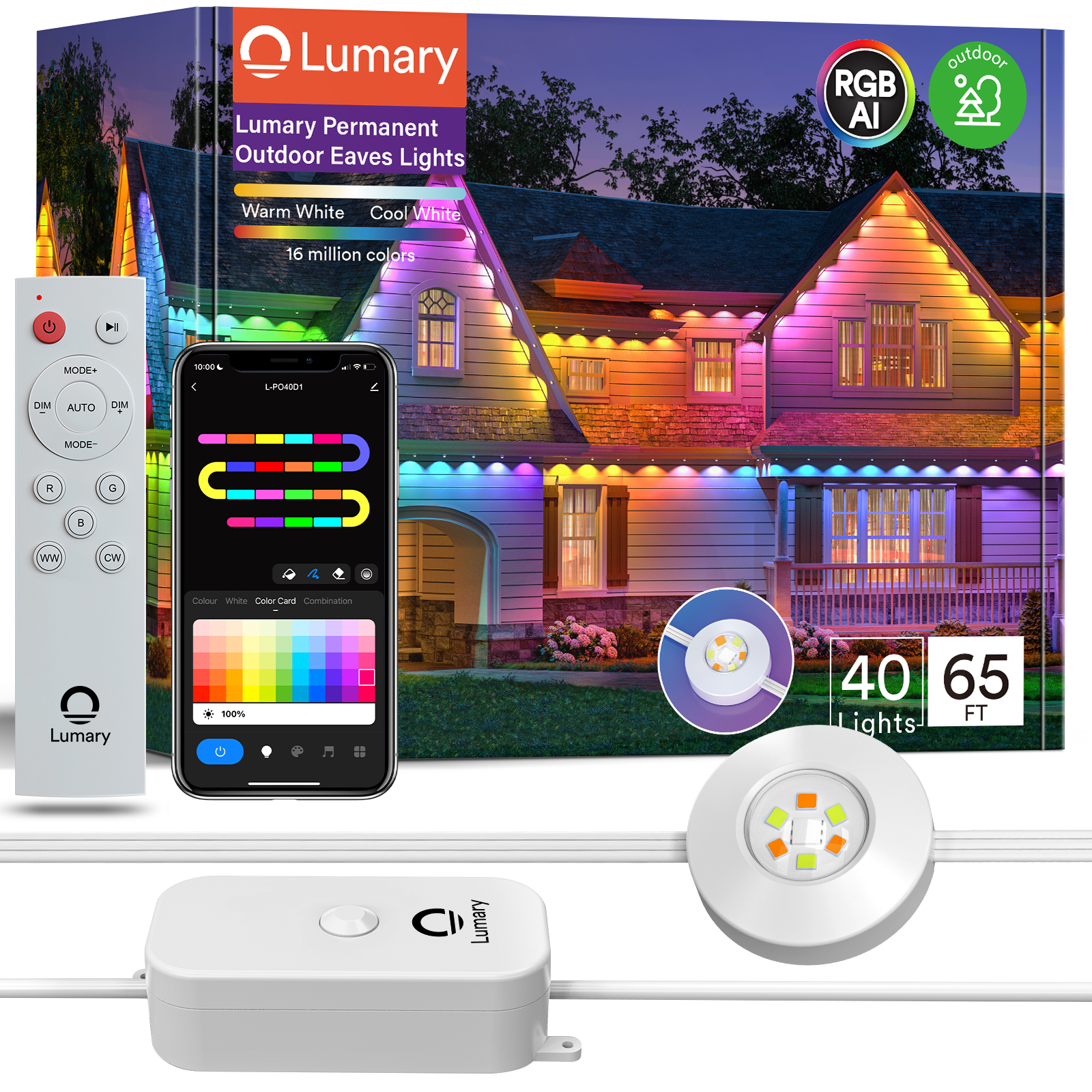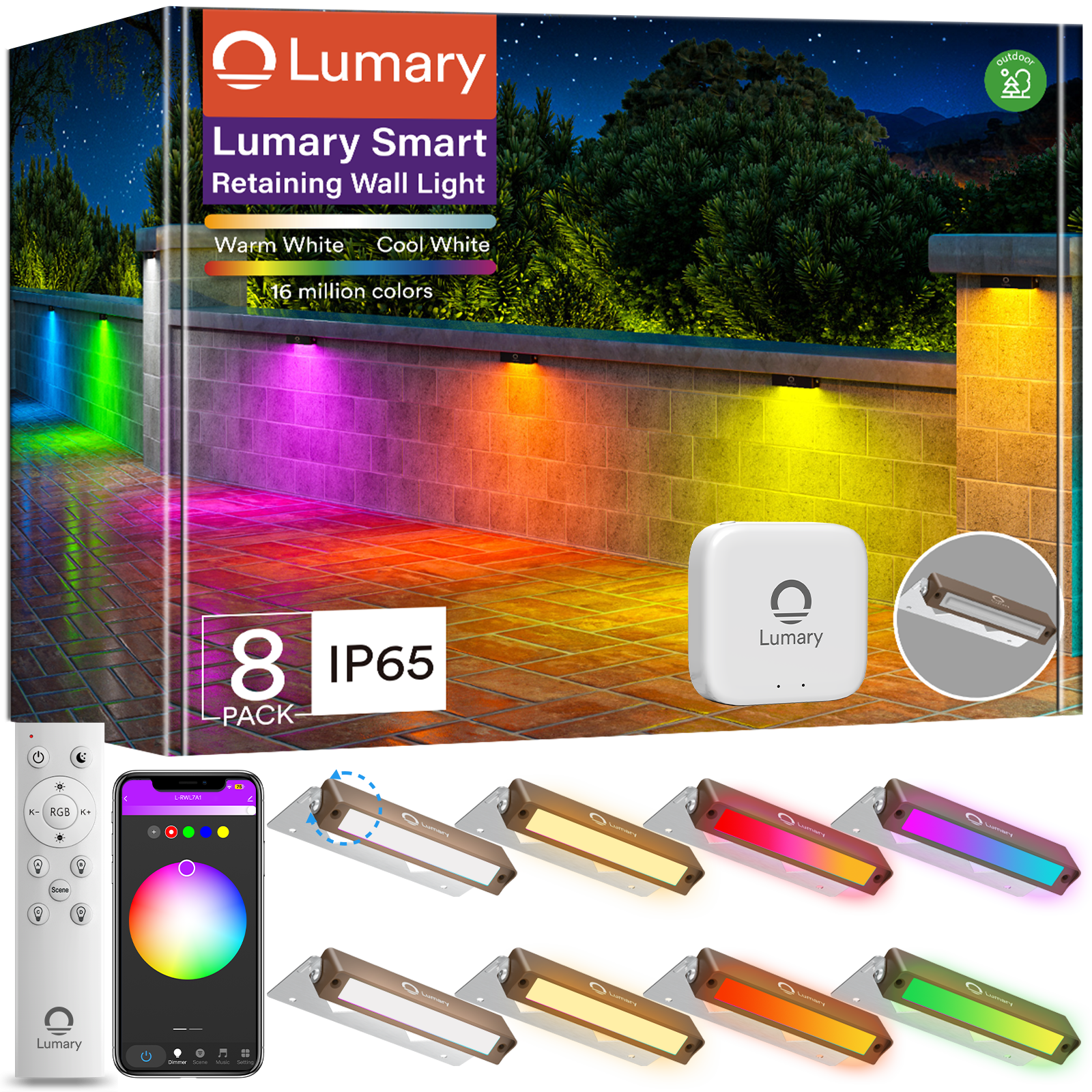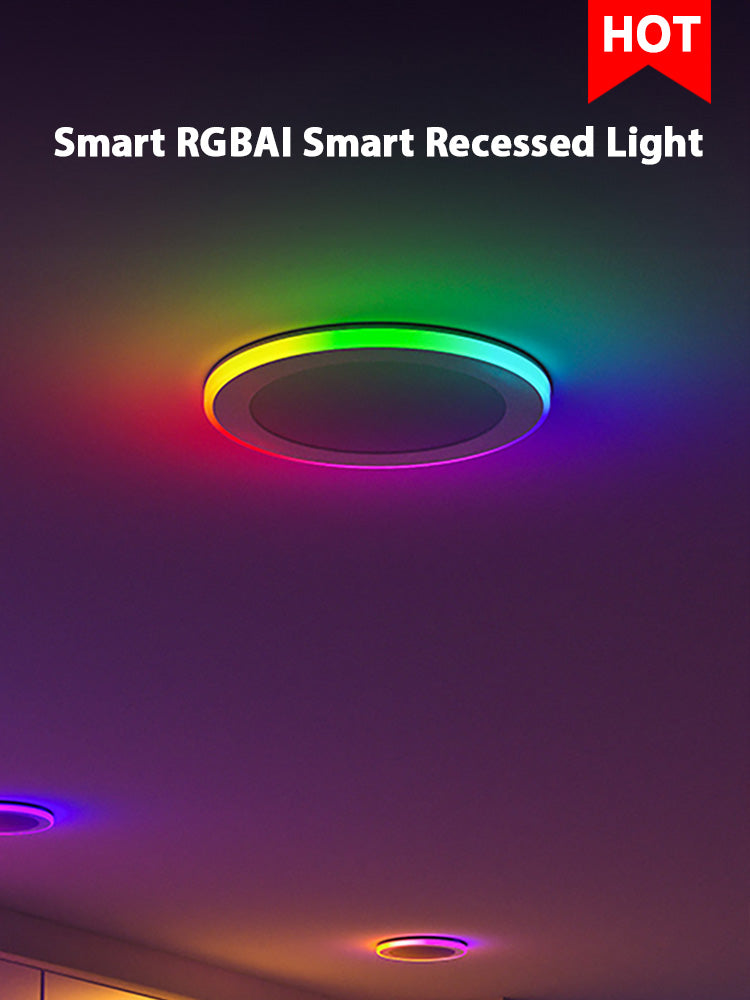Landscape lighting transforms your outdoor spaces into enchanting environments. It highlights architectural features and enhances the beauty of your garden or patio. Multi-color landscape lights offer a unique way to elevate your design. These lights allow you to create different moods and atmospheres with ease. The growing demand for LED lighting, known for its energy efficiency and longevity, is driving the market forward. In fact, North America's outdoor landscape lighting market is projected to grow significantly, reflecting the increasing popularity of diverse lighting designs.
Understanding Multi-Color Landscape Lighting

What is Multi-Color Landscape Lighting?
Definition and basic concept
Multi-color landscape lighting refers to the use of lights that can change colors to enhance outdoor spaces. These lights allow you to create different moods and atmospheres by adjusting the color and intensity. You can use them to highlight architectural features, illuminate pathways, or add a splash of color to your garden. The technology behind these lights often includes RGB (Red, Green, Blue) or RGBW (Red, Green, Blue, White) systems, which mix colors to produce a wide range of hues.
Historical development and evolution
The journey of landscape lighting began in the mid-1700s when American cities experimented with illuminating streets and walkways. This innovation laid the groundwork for all forms of exterior lighting. By the 20th century, electric lighting became widespread, marking a transformative moment in landscape design. Designers could now highlight specific features and create mood lighting with ease. The introduction of LED lights further revolutionized the field, offering energy efficiency and versatility. Today, multi-color options have become an essential element in modern landscaping, allowing for creative and dynamic designs.
Benefits of Multi-Color Lighting
Aesthetic enhancement
Multi-color lighting significantly enhances the aesthetic appeal of outdoor spaces. You can use these lights to create stunning visual effects that transform your garden or patio into a magical setting. Whether you're hosting a party or enjoying a quiet evening, the ability to change colors adds a unique touch to your environment.
Energy efficiency and cost-effectiveness
LED technology, commonly used in multi-color lighting, offers remarkable energy efficiency. These lights consume less power compared to traditional lighting options, reducing your electricity bills. Additionally, their long lifespan means you won't need to replace them frequently, making them a cost-effective choice for your outdoor lighting needs.
Versatility in design
The versatility of multi-color landscape lighting allows you to customize your outdoor space to suit any occasion. You can easily switch between different colors and intensities to match your mood or event. This flexibility makes it possible to create a welcoming ambiance for guests or a serene atmosphere for relaxation. With multi-color lighting, your design possibilities are virtually limitless.
Types of Multi-Color Landscape Lighting

When it comes to enhancing your outdoor spaces, choosing the right type of multi-color landscape lights can make all the difference. Let's explore some popular options that can transform your garden or patio into a vibrant and inviting environment.
LED Lighting
Features and advantages
LED lighting has become a game-changer in the world of outdoor illumination. These lights offer several benefits that make them a top choice for multi-color landscape lights. First, they are incredibly energy-efficient, consuming far less power than traditional bulbs. This efficiency not only reduces your electricity bills but also contributes to a more sustainable environment. Additionally, LED lights boast a long lifespan, meaning you won't have to worry about frequent replacements. Their durability makes them ideal for outdoor use, where they can withstand various weather conditions.
LED lights also provide excellent color customization. With advanced RGB and RGBW technology, you can create a wide range of colors and effects to suit any occasion. Whether you're hosting a lively party or enjoying a peaceful evening, LED multi-color landscape lights can set the perfect mood.
Popular LED products
In the market, you'll find a variety of LED products designed for outdoor use. One standout option is the Lumary Smart Outdoor Spot Lights 56ft Gen 2 (6Pack). These lights offer 16 million color options, allowing you to tailor your lighting to any event or mood. With features like voice control and a music sync function, these lights provide both convenience and entertainment. Their robust construction and IP65 waterproof rating ensure they can handle the elements, making them a reliable choice for your landscape lighting needs.
Solar-Powered Lighting
How it works
Solar-powered lighting harnesses the sun's energy to illuminate your outdoor spaces. These lights come equipped with solar panels that absorb sunlight during the day, converting it into electricity stored in rechargeable batteries. As night falls, the stored energy powers the lights, providing a sustainable and cost-effective lighting solution.
Pros and cons
Solar-powered multi-color landscape lights offer several advantages. They are eco-friendly, as they rely on renewable energy sources, and they eliminate the need for complex wiring, making installation a breeze. However, their performance can vary depending on the amount of sunlight they receive. In areas with limited sunlight, these lights may not shine as brightly or for as long as desired. Despite this, they remain a popular choice for those seeking an environmentally conscious lighting option.
Smart Lighting Systems
Integration with smart home technology
Smart lighting systems take multi-color landscape lights to the next level by integrating with your smart home setup. These systems allow you to control your outdoor lighting using your smartphone, voice commands, or even automation. You can easily adjust colors, brightness, and timing to match your preferences or schedule.
Control and customization options
With smart lighting, customization is at your fingertips. You can create personalized lighting scenes for different occasions, whether it's a festive celebration or a quiet evening under the stars. The ability to control your lights remotely adds convenience and flexibility to your outdoor lighting experience. Plus, with features like geofencing, your lights can automatically turn on or off based on your location, enhancing both security and energy efficiency.
Installation Tips and Techniques
Planning Your Lighting Design
Assessing your landscape
Before diving into the installation, take a good look at your landscape. Walk around your garden or patio and note the areas you want to highlight. Consider the features that deserve attention, like trees, pathways, or architectural elements. Think about how you use your outdoor space. Do you entertain guests often, or do you prefer a quiet retreat? Your lighting should reflect your lifestyle and enhance your outdoor experience.
Choosing the right fixtures
Once you've assessed your landscape, it's time to choose the right fixtures. Look for lights that match your design goals and fit the specific areas you want to illuminate. For pathways, consider low-profile lights that provide even illumination. Spotlights work well for highlighting trees or architectural features. Make sure the fixtures are durable and weather-resistant, especially if you live in an area with harsh weather conditions. LED lights are a great choice for their energy efficiency and long lifespan.
Installation Process
Tools and materials needed
Gather the necessary tools and materials before starting the installation. You'll need a shovel or spade for digging, a screwdriver for assembling fixtures, and a voltage tester for safety checks. Don't forget the lighting fixtures, cables, and connectors. If you're installing solar-powered lights, ensure you have the solar panels and batteries ready. Having everything on hand will make the process smoother and more efficient.
Step-by-step guide
-
Plan your layout: Use your assessment notes to map out where each light will go. Mark these spots with small flags or stakes.
-
Dig trenches: For wired lights, dig shallow trenches to lay the cables. Keep them neat and organized to avoid tangling.
-
Install fixtures: Place the fixtures in their designated spots. Secure them firmly in the ground or on surfaces.
-
Connect wiring: Connect the wires according to the manufacturer's instructions. Use waterproof connectors to prevent moisture damage.
-
Test the system: Turn on the lights and check each one to ensure they're working correctly. Adjust the angles and positions as needed.
-
Bury cables: Once satisfied with the setup, bury the cables in the trenches. Cover them with soil and pat down gently.
Common Mistakes to Avoid
Over-illumination
It's easy to get carried away with lighting, but too much can overwhelm your space. Aim for a balanced look that highlights key features without overpowering them. Use dimmers or adjustable fixtures to control brightness levels. Remember, less is often more when it comes to creating a cozy and inviting atmosphere.
Poor placement of lights
Placing lights in the wrong spots can lead to uneven illumination and wasted energy. Avoid positioning lights directly in people's eyes or too close to reflective surfaces. Ensure path lights are spaced evenly to prevent dark patches. Experiment with different angles and heights to find the perfect setup for your landscape.
Maintenance and Troubleshooting
Keeping your multi-color landscape lighting in top shape ensures it continues to enhance your outdoor spaces beautifully. Regular maintenance and troubleshooting common issues can help you achieve this.
Regular Maintenance Practices
Cleaning and upkeep
Regular cleaning keeps your lights shining bright. Dust and debris can accumulate on the fixtures, dimming their glow. Use a soft cloth or brush to gently wipe the surfaces. For stubborn dirt, a mild soap solution works wonders. Avoid harsh chemicals that might damage the finish. Check for any signs of wear or damage, like cracked lenses or loose connections. Address these promptly to prevent further issues.
Seasonal adjustments
Seasons change, and so should your lighting setup. In winter, snow and ice can cover your lights, reducing their effectiveness. Clear away any obstructions to maintain optimal illumination. During the growing season, plants might block the light paths. Trim back foliage to ensure your lights can do their job. Adjust the angles and positions of your fixtures as needed to accommodate these changes.
Troubleshooting Common Issues
Flickering lights
Flickering lights can be annoying and might indicate a problem. Start by checking the connections. Loose wires or poor contacts often cause flickering. Tighten any loose connections and ensure everything is secure. If the issue persists, inspect the power source. Voltage fluctuations can lead to flickering. Consider using a voltage stabilizer to maintain a steady power supply.
Color inconsistencies
Color inconsistencies can disrupt the harmony of your lighting design. Begin by examining the bulbs. Different types or brands might produce varying shades. Replace mismatched bulbs with identical ones for uniformity. Check the settings on your control system. Incorrect configurations can lead to color variations. Reset the system or consult the manual for guidance. If the problem continues, it might be time to consult a professional for further assistance.
By following these maintenance tips and addressing common issues, you can keep your multi-color landscape lighting looking its best. Enjoy the vibrant and inviting atmosphere it creates in your outdoor spaces!
You've explored the vibrant world of multi-color landscape lighting. From understanding its benefits to learning about different types and installation tips, you're now equipped to transform your outdoor spaces. Experiment with these lights to create unique atmospheres that reflect your style. Multi-color lighting not only enhances aesthetics but also adds safety and security to your home. Embrace the versatility and energy efficiency of LED options. Let your creativity shine as you illuminate your garden or patio. With the right lighting, your outdoor space becomes a captivating extension of your home.


